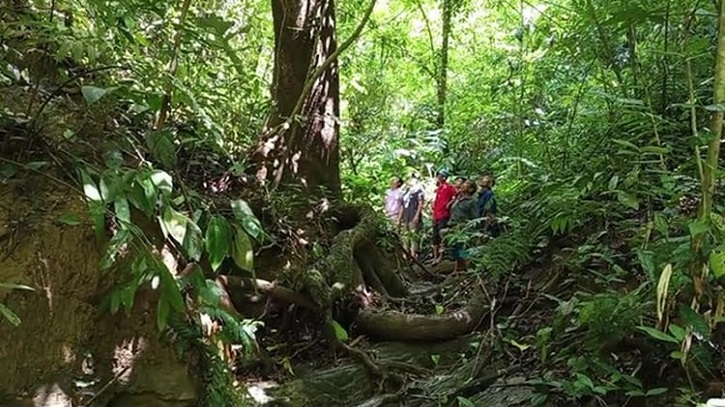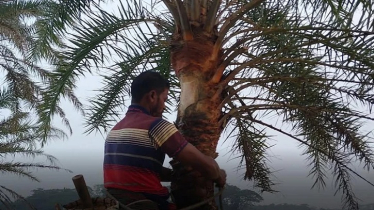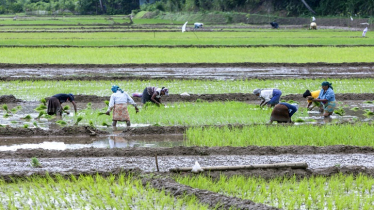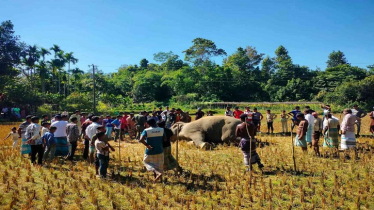
Experts say the community-managed Parabon or Mouza Forest in Khagrachhari has the potential to become a national role model for biodiversity conservation. According to them, if local residents in the country’s hilly and forested regions take similar initiatives, preserving biodiversity and forest ecosystems would become significantly easier, contributing meaningfully to climate resilience.
In Pablakhali Mouza of Dighinala upazila, local villagers are working to safeguard natural balance and biodiversity. At a time when forest resources are rapidly disappearing in many areas, the people of this mouza have successfully established a remarkable conservation initiative spanning more than 700 acres.
The Chittagong Hill Tracts once had extensive forests and rich vegetation, but decades of logging and deforestation have drastically reduced forest cover. Nonetheless, several villages have continued protecting pockets of forest through their own community-driven systems. Known as Village Common Forests (VCFs), or Parabon or Mouza Forests, these areas are conserved by villagers for ecological stability and livelihood support. The Pablakhali Mouza Forest in Khagrachhari, covering nearly 700 acres, is one of the most notable examples.
Supported by UNDP funding and assisted by the Khagrachhari Hill District Council, the local community is actively maintaining biodiversity and forest resources. Authorities involved in the initiative believe it has strong potential to serve as a national model for forest conservation.
Residents say the forest is governed by strict community rules prohibiting the cutting of trees and bamboo, as well as hunting. Anyone caught violating these rules faces penalties under the village’s traditional laws. To strengthen conservation efforts, the community seeks continued cooperation from government and non-government stakeholders.
The forest contains six streams and numerous canals, along with a wide range of tree species such as garjan, gamari, civit, lombu, telsur, chapalish, wild olive, uri, mango, small jam, haritaki and bahera. It has also become a sanctuary for deer, jungle fowl, bears, wild boar, myna, parrots and various other species of birds and wildlife. Residents say these conservation practices have brought clear benefits. The existence of the forest ensures continuous water flow through the streams and canals, making farming easier. Drinking water for the area is also sourced from these forest streams. According to local sources, Khagrachhari has 59 such Parabon or Mouza Forests.
Pablakhali resident Ajit Boron Chakma says the forest is closely linked not only to the environment but also to the community’s livelihood. Driven by a deep connection to nature and practical necessity, the villagers are committed to protecting biodiversity and combating climate impacts across nearly 700 acres.
Local journalist Rupayan Talukdar says he was overwhelmed by the number of streams, springs and trees inside the forest. He notes that while many people are clearing thousands of acres of forest land to establish commercial plantations, the residents of Pablakhali are working for the sake of biodiversity and climate protection for future generations. He believes the initiative is highly admirable and could serve as a model across the country.
He adds that the water from the forest’s streams and springs is used for nearby agriculture, making farming on hilly land easier. The community follows strict conservation rules, and he believes similar initiatives across the country’s forest zones could bring significant improvements to national biodiversity conservation.
Chinghlemong Chowdhury, Public Relations Officer of the Khagrachhari Hill District Council, says the 700-acre forest includes four major streams and numerous creeks and waterfalls. He notes that several rare mother trees remain in the area and that collective action is essential to ensuring a better planet for future generations.
Khagrachhari Forest Division’s Divisional Forest Officer Md. Farid Miah says the district has several Parabon areas, all of which play crucial roles in biodiversity conservation. He describes the Pablakhali forest as exceptionally rich and says the villagers are sincere in their commitment to protecting it. He adds that the Hill District Council has already initiated a conservation project for Parabon areas, and the Forest Department is prepared to assist whenever needed.
However, local residents point out that widespread deforestation throughout the Chittagong Hill Tracts over the years has left current forest resources insufficient. They call for new government-led forest creation initiatives to strengthen biodiversity conservation and enhance climate resilience.





